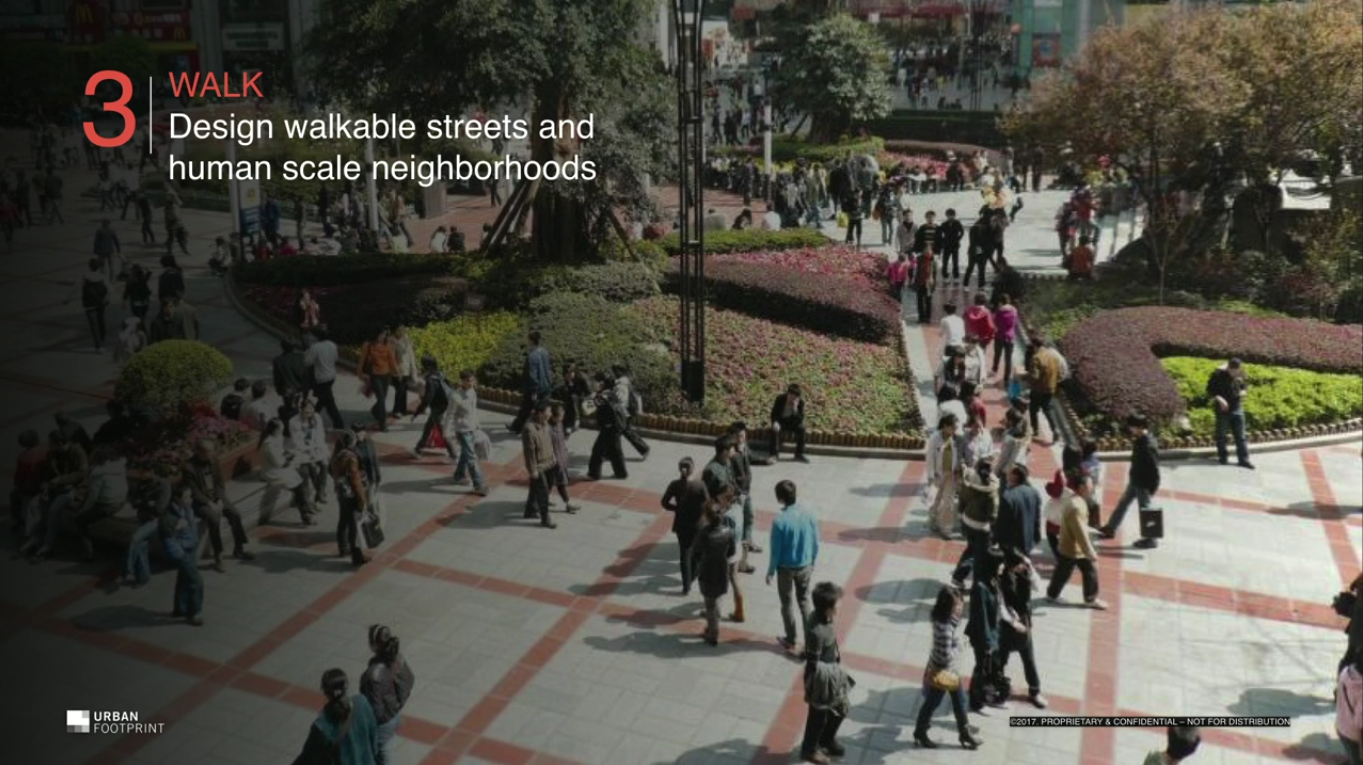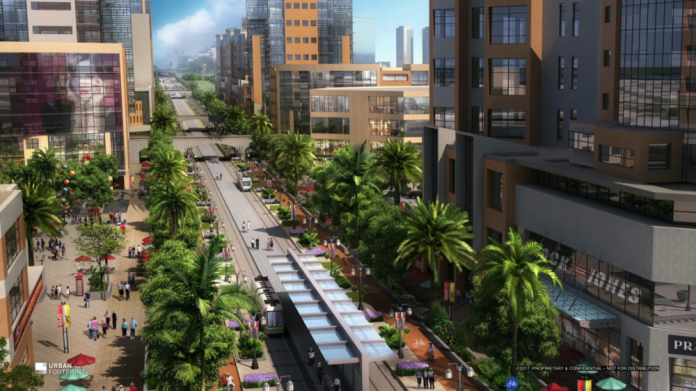Peter Calthorpe breaks down some scenarios for growth using as examples California and Chongqing, China in this TED talk from April. Calthorpe argues sprawl isolates–and counter to prevailing wisdom, it can be high density, citing gated high-rise superblocks in China as an example. He highlights seven principles the Chinese government is implementing to reduce sprawl and produce higher quality urban places. Calthorpe’s firm, Urban Footprint, helped formulate these seven principles:
- “Preserve natural ecologies, agrarian landscapes, and cultural heritage sites.”
- Mix – “Create mixed-use and mixed-income neighborhoods.”
- Walk – “Design walkable streets and human scale neighborhoods.”
- Bike – “Prioritize bicycle networks and auto-free streets.”
- Connect – “Increase density of road network, limit block size.”
- Ride – “Develop high quality transit and affordable BRT.”
- Focus – “Match density and mix to transit capacity.”
It being a TED talk, the question and answer portion focused on autonomous vehicles because shiny tech object. These prinicples aren’t necessarily new concepts to people who follow urban planning, but Calthorpe does manage to package them in a fairly compelling way and make a strong connection to climate change mitigation.

Doug Trumm is publisher of The Urbanist. An Urbanist writer since 2015, he dreams of pedestrian streets, bus lanes, and a mass-timber building spree to end our housing crisis. He graduated from the Evans School of Public Policy and Governance at the University of Washington in 2019. He lives in Seattle's Fremont neighborhood and loves to explore the city by foot and by bike.


